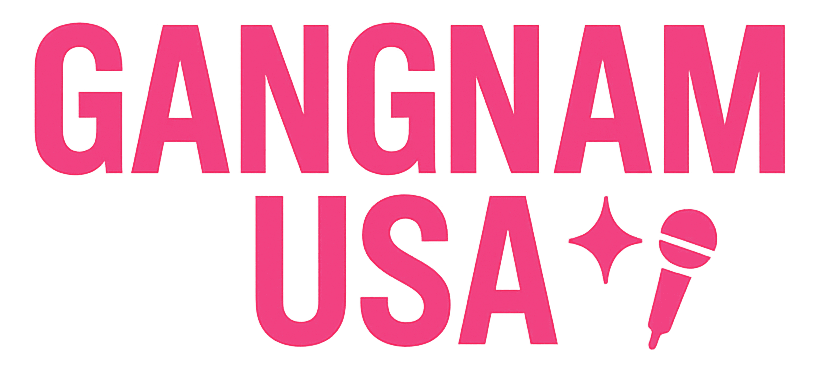K-Pop has transcended borders to become a global phenomenon, captivating audiences with its dynamic sound, mesmerizing choreography, and vibrant visuals. But beyond the catchy beats and dazzling performances lies a hidden treasure for language enthusiasts: K-Pop songs can be an incredibly fun and effective way to learn Korean. Whether you’re a beginner or an intermediate learner, the rhythmic flow and repetitive nature of K-Pop lyrics provide an engaging tool to boost your vocabulary, improve your pronunciation, and immerse yourself in Korean culture. In this comprehensive guide, we’ll explore why K-Pop is a powerful language learning tool, share strategies for making the most of your musical studies, and present our top picks for the best K-Pop songs to learn Korean.
Why K-Pop is Perfect for Learning Korean
Engaging and Memorable
Music has long been known to enhance memory and language retention. The catchy hooks and repetitive refrains in K-Pop songs stick in your mind, making it easier to recall new words and phrases. The upbeat rhythms encourage you to sing along, which is a fantastic way to practice pronunciation and intonation.
Cultural Immersion
Learning a language is not just about vocabulary and grammar—it’s also about understanding culture. K-Pop is deeply rooted in Korean culture, and many songs incorporate traditional idioms, expressions, and even social commentary. By delving into K-Pop, you gain insights into Korean values, humor, and everyday life, all of which can enrich your language learning experience.
Accessible for All Levels
K-Pop songs are diverse in terms of complexity. Some tracks feature simple, repetitive lyrics ideal for beginners, while others offer more poetic and complex language for advanced learners. This range means you can tailor your listening and practice sessions to your current level, gradually challenging yourself as you progress.
Multi-Sensory Learning
Combining auditory input (listening to the song) with visual aids (reading the lyrics or watching a music video) and kinesthetic activity (singing along or dancing) activates different parts of your brain. This multi-sensory approach makes learning more holistic and enjoyable, ensuring that new language skills are firmly embedded in your memory.
How to Use K-Pop Songs as a Language Learning Tool
Before diving into our list of recommended songs, here are some practical tips to maximize your learning experience with K-Pop:
1. Active Listening
Rather than having K-Pop songs play in the background, make a conscious effort to listen actively. Focus on the pronunciation, rhythm, and intonation of the lyrics. Listening closely can help you pick up subtle nuances in the language.
2. Read and Annotate Lyrics
Follow along with the lyrics as you listen. Many K-Pop music videos offer subtitles, and there are plenty of online resources that provide Romanized and translated lyrics. Write down new words, expressions, or grammatical structures that you encounter, and look up their meanings and uses.
3. Sing Along
Singing along with your favorite tracks is not only fun but also an excellent way to practice pronunciation and fluency. It helps train your mouth to form Korean sounds and improves your overall speaking ability.
4. Break Down the Song
Take one verse or chorus at a time and dissect it. Analyze the grammar, sentence structure, and vocabulary. Understanding the construction of sentences will deepen your grasp of Korean syntax and help you learn to form your own sentences.
5. Use Karaoke Versions
Karaoke tracks can be a great way to test your retention. By singing without the vocal track, you challenge yourself to recall the words and mimic the intonation of the original singer.
6. Create Flashcards
Make flashcards for new vocabulary and phrases from the songs. Regular review with flashcards reinforces your learning and helps you commit words to long-term memory.
7. Engage with the Community
Join online forums, social media groups, or language exchange communities dedicated to K-Pop and Korean language learning. Sharing your progress, asking questions, and discussing interpretations of lyrics can provide additional support and motivation.
Top K-Pop Songs to Learn Korean
Here, we’ve curated a list of K-Pop songs that are not only popular but also exceptionally beneficial for learning Korean. Each song has its unique strengths, from simple and repetitive lyrics to rich cultural expressions. Let’s explore our top picks.
1. “Gee” by Girls’ Generation
Why It’s Great:
“Gee” is one of the most iconic K-Pop songs, celebrated for its catchy melody and simple, repetitive lyrics. The song’s vocabulary is straightforward, making it perfect for beginners. Its repetitive chorus reinforces key phrases, while the playful lyrics introduce you to colloquial expressions used in everyday conversation.
Learning Focus:
- Repetition: Repeated phrases make it easier to memorize and practice pronunciation.
- Vocabulary: Learn adjectives and expressions used to describe feelings and impressions.
- Cultural Impact: Understanding the song’s context helps you appreciate its role in shaping K-Pop history.
2. “Love Scenario” by iKON
Why It’s Great:
“Love Scenario” offers a mellow, melodic approach with clear enunciation and a moderate pace. The lyrics narrate a bittersweet love story, using simple yet evocative language that is both accessible and memorable. The repetitive nature of the chorus makes it easier for learners to sing along and internalize the vocabulary.
Learning Focus:
- Narrative Structure: Practice understanding and recounting a story in Korean.
- Emotional Vocabulary: Learn words and phrases related to feelings and relationships.
- Pronunciation: The clear vocals help you mimic proper pronunciation and intonation.
3. “Spring Day” by BTS
Why It’s Great:
BTS’s “Spring Day” is not only a fan favorite but also a beautiful example of poetic songwriting in Korean. While the language is a bit more advanced, the emotional depth and cultural references make it an enriching learning experience. The song’s narrative touches on themes of longing, loss, and hope, which are conveyed through vivid imagery and metaphors.
Learning Focus:
- Advanced Vocabulary: Ideal for intermediate learners looking to expand their lexicon.
- Grammar Structures: Examine complex sentence structures and poetic expressions.
- Cultural Nuances: Gain insight into themes that resonate deeply within Korean society.
4. “Red Flavor” by Red Velvet
Why It’s Great:
“Red Flavor” is an upbeat, energetic track that is perfect for learning vibrant, sensory vocabulary. The song’s lively tempo and clear enunciation make it a fun and engaging choice for language learners. Its lyrics celebrate summer and the sensory experiences associated with it, offering a wealth of descriptive language related to taste, color, and emotion.
Learning Focus:
- Sensory Vocabulary: Learn adjectives and nouns that describe flavors, colors, and emotions.
- Mood and Tone: Understand how language can convey energy and excitement.
- Repetition: The chorus’s repetitive nature makes it easy to remember key phrases.
5. “Likey” by TWICE
Why It’s Great:
TWICE’s “Likey” is a bubbly, catchy song that captures the youthful spirit of K-Pop. Its lyrics are simple and repetitive, making it ideal for beginners who want to practice everyday expressions and casual vocabulary. The song’s fun vibe encourages you to sing along, thereby enhancing your listening and speaking skills.
Learning Focus:
- Everyday Expressions: Learn informal language used in daily conversations.
- Repetition: The chorus reinforces basic phrases and expressions.
- Pronunciation Practice: Clear enunciation helps with mimicking the sounds and rhythms of Korean speech.
6. “Ddu-Du Ddu-Du” by Blackpink
Why It’s Great:
While “Ddu-Du Ddu-Du” is known for its high-energy beat and bold visuals, it also offers language learners a chance to dive into more contemporary and colloquial Korean. The lyrics include trendy slang and modern expressions that are widely used among young Koreans today. Although the pace is faster, breaking down the lyrics can be an excellent challenge for advanced beginners.
Learning Focus:
- Modern Slang: Familiarize yourself with current, casual expressions used by younger generations.
- Fast-Paced Listening: Improve your ability to understand rapid speech and complex lyrics.
- Cultural Trends: Gain insight into the language trends that influence modern Korean pop culture.
7. “Euphoria” by BTS
Why It’s Great:
“Euphoria” is a smooth, uplifting track that showcases BTS’s signature style of blending emotional depth with beautiful melodies. The song’s clear articulation and relatively moderate pace make it accessible to learners who want to enhance their listening skills and emotional vocabulary. The lyrics evoke feelings of happiness and freedom, providing a rich context for learning descriptive language.
Learning Focus:
- Emotional Vocabulary: Enhance your ability to describe feelings and moods.
- Pronunciation: The clear diction in the vocals is ideal for practicing accurate pronunciation.
- Thematic Learning: Understand how language can be used to express abstract emotions and ideas.
Integrating K-Pop into Your Korean Learning Routine
Create a Structured Listening Schedule
To maximize the benefits of using K-Pop for language learning, it’s important to incorporate it into a structured routine. Dedicate specific times during the week for listening sessions, lyric analysis, and singing practice. This consistency will help reinforce your learning and gradually build up your language skills.
Combine Multiple Learning Modalities
- Visual: Watch music videos and lyric videos to connect the spoken word with its written form.
- Auditory: Focus on active listening during playback and repeat challenging sections multiple times.
- Kinesthetic: Engage in karaoke sessions or even dance along to solidify your recall and pronunciation.
Use Supplemental Resources
Augment your K-Pop learning journey with additional language learning tools:
- Language Apps: Consider using apps like Duolingo, Memrise, or Drops to reinforce vocabulary and grammar.
- Online Forums: Join Korean language learning communities on Reddit, Discord, or dedicated K-Pop fan groups.
- Translation Websites: Use reliable translation tools and websites to verify the meaning of new words and phrases.
Record and Review
Maintain a journal or digital recording of your practice sessions. Record yourself singing along to your favorite tracks and compare your pronunciation over time. This self-assessment can boost your confidence and help pinpoint areas for improvement.
Additional Tips for Maximizing Your Learning Experience
Understand the Context
K-Pop songs often reflect contemporary issues, cultural references, or even historical events. Take the time to research the background of the song you’re studying. Understanding the context behind the lyrics can offer deeper insights into the language and enrich your overall learning experience.
Engage with Native Speakers
If possible, connect with native Korean speakers through language exchange programs or social media groups dedicated to Korean language learning. Discussing your favorite K-Pop songs with native speakers can provide additional insights, help clarify any ambiguities in the lyrics, and improve your conversational skills.
Embrace Mistakes
Language learning is a journey, and making mistakes is a natural part of the process. Don’t be discouraged if you mispronounce words or misinterpret a phrase. Each mistake is an opportunity to learn and grow, and with every repetition, you’re one step closer to fluency.
Stay Consistent and Patient
Progress in language learning often comes in small, steady increments. Celebrate each small victory—whether it’s understanding a difficult lyric, nailing the pronunciation, or simply enjoying the song without needing subtitles. Consistency, coupled with passion for K-Pop, will yield impressive results over time.
The Broader Impact of K-Pop on Language and Culture
K-Pop’s global influence goes far beyond music charts. Its impact on language learning is a testament to the power of cultural exchange. As millions of fans around the world embrace K-Pop, they not only learn a new language but also gain a deeper appreciation for Korean history, traditions, and modern social dynamics. This cultural bridge fosters mutual understanding and encourages learners to explore other aspects of Korean life—from cuisine and fashion to literature and cinema.
The cross-cultural nature of K-Pop also means that you’re joining a vibrant, supportive community of learners and fans who share your passion. Whether you’re attending online fan meetups, participating in language exchange sessions, or simply discussing your favorite lyrics on social media, the communal aspect of K-Pop learning creates an environment where language and culture thrive together.
Final Thoughts: Let the Music Guide Your Learning Journey
K-Pop songs are more than just catchy tunes—they’re gateways to mastering the Korean language and immersing yourself in a rich, dynamic culture. By integrating your love for music with language learning, you transform what might seem like a daunting task into an exciting, daily adventure. Each song offers a unique perspective on the language, from the playful simplicity of “Gee” and “Likey” to the emotive storytelling of “Spring Day” and “Euphoria.”
Remember that language learning is a journey, and every song you explore is a stepping stone towards greater fluency. Whether you’re a beginner just starting out or an intermediate learner looking to deepen your understanding, the world of K-Pop provides a diverse and engaging array of resources to support your growth.
So, cue up your favorite tracks, grab a notebook for new vocabulary, and let the rhythm of K-Pop guide you on your path to mastering Korean. Embrace the joy of learning, celebrate every breakthrough, and remember that with every beat and every lyric, you’re not just learning a language—you’re becoming part of a global community united by music and culture.
Happy listening, happy learning, and let the music lead you to fluency!
By incorporating these K-Pop songs into your language study routine and embracing the techniques discussed above, you’ll find that learning Korean becomes as exhilarating as discovering a new favorite track. Each song is a lesson, a celebration of language, and a reflection of a culture that continues to inspire millions around the world. Enjoy the journey, and let the power of music open doors to new linguistic and cultural horizons.
o3-mini




